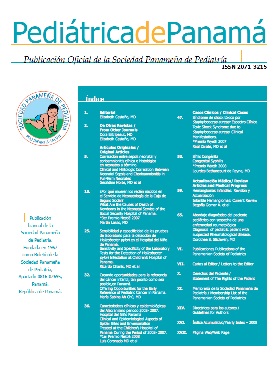Crohn's disease unusual form of presentation and diagnosis.
Authors
DOI:
https://doi.org/10.37980/im.journal.rspp.20221908Keywords:
Inflammatory bowel disease, Crohn disease, small intestine, anemiaAbstract
Inflammatory Bowel Disease (IBD) is characterized by chronic inflammation of the intestinal mucosa, where patients go through periods of remission and relapse. Within the spectrum of the disease we find its variants ulcerative colitis (UC), Crohn's disease (CD), indeterminate colitis (IC) or unclassified IBD (IBD nC). This set of entities has a multifactorial etiology, it may be due to genetic factors, but recently an increase in its diagnosis has been observed and it is related to environmental factors such as diet and intestinal dysbiosis.
The incidence in developed countries is approximately 10 per 100,000 children, with 20% in children under 10 years of age. There are few data on its incidence in Latin America. Approximately 25% of cases are diagnosed in childhood and adolescence.
The clinical manifestations of IBD will depend on the location and the time of evolution of the disease, it can manifest with extra-intestinal symptoms, which can delay the diagnosis.
Endoscopy with biopsy is the main diagnostic tool; however, other imaging studies, especially magnetic resonance enterography, must be available to assess the extent of the disease. In recent years there has been access to capsule endoscopy that will help determine lesions in areas where endoscopy cannot be reached.
A case of interest is presented that debuts as occult bleeding with inconclusive upper and lower digestive endoscopy up to the terminal ileum and through capsule endoscopy the diagnosis of Crohn's disease of the jejunum could be established.
Downloads
Additional Files
Published
Issue
Section
License
Copyright (c) 2022 Infomedic Intl.Derechos autoriales y de reproducibilidad. La Revista Pediátrica de Panamá es un ente académico, sin fines de lucro, que forma parte de la Sociedad Panameña de Pediatría. Sus publicaciones son de tipo gratuito, para uso individual y académico. El autor, al publicar en la Revista otorga sus derechos permanente para que su contenido sea editado por la Sociedad y distribuido Infomedic International bajo la Licencia de uso de distribución. Las polítcas de distribución dependerán del tipo de envío seleccionado por el autor.






